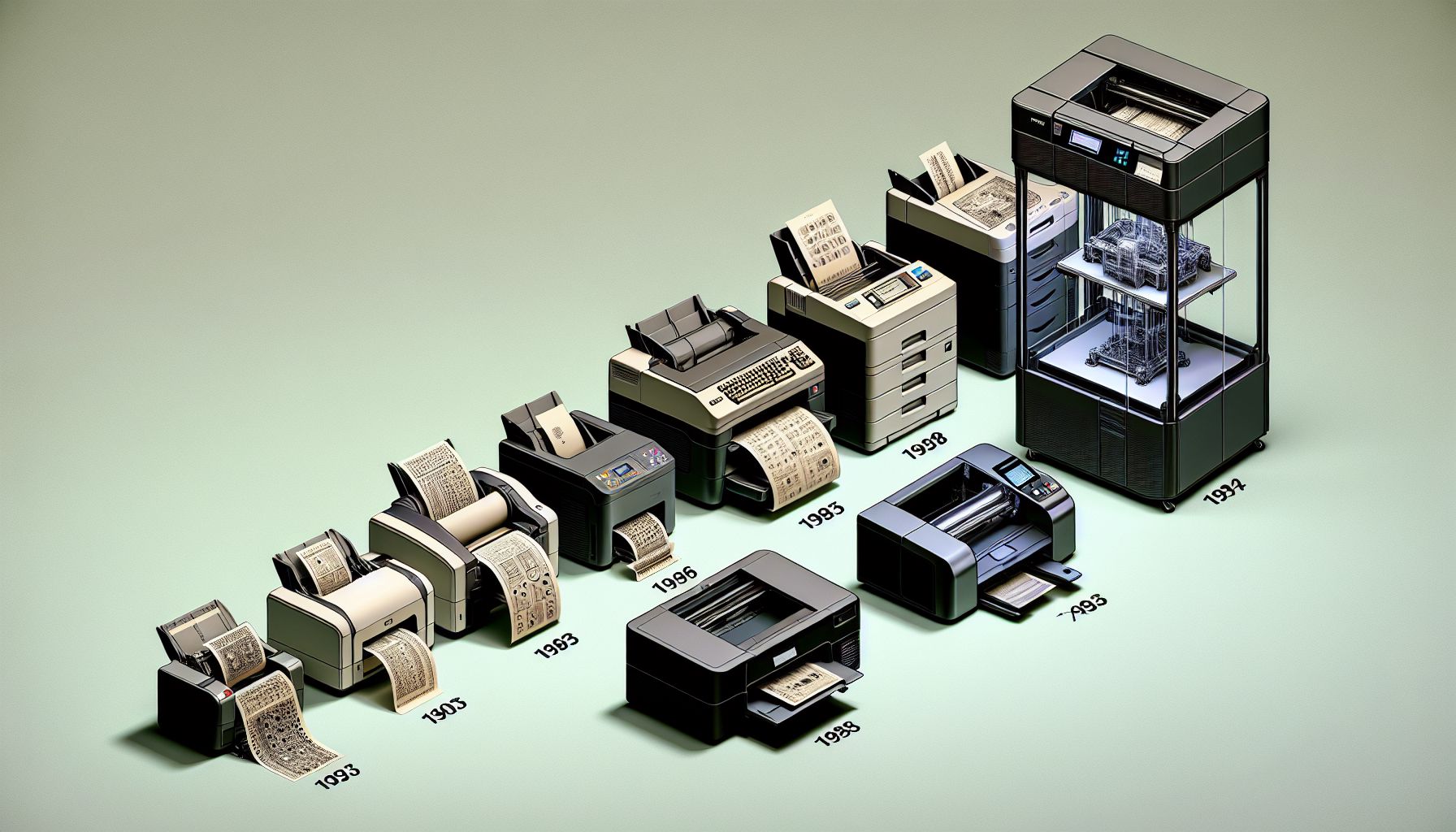In today’s digital age, printers play a crucial role in both personal and professional settings. From printing documents and photos to creating physical prototypes, printers have come a long way since the days of dot matrix machines. In this article, we will explore the evolution of printers, from their humble beginnings to the cutting-edge technology of 3D printing.
Introduction
Printers have been around for centuries, with the first mechanical device for printing appearing in the early 15th century. This device, known as the printing press, revolutionized the way information was disseminated and paved the way for the development of modern printers.
Fast forward to the 20th century, and we see the emergence of the dot matrix printer. This type of printer used a series of pins to strike an inked ribbon and transfer characters onto paper. While not the most efficient or high-quality option, dot matrix printers were the go-to choice for many businesses and households for several decades.
The Rise of Inkjet and Laser Printers
In the 1980s, inkjet and laser printers began to gain popularity for their faster printing speeds and higher print quality. Inkjet printers work by spraying tiny droplets of ink onto paper, while laser printers use a laser beam to project an image onto a photosensitive drum and transfer toner to paper.
Both inkjet and laser printers offer a significant improvement in print quality over dot matrix printers, making them the preferred choice for individuals and businesses alike. Inkjet printers are typically more affordable upfront, but laser printers tend to be more cost-effective in the long run due to their lower cost per page.
The Advent of All-in-One Printers
As technology continued to advance, all-in-one printers emerged on the market. These versatile machines combine the functionality of a printer, scanner, copier, and sometimes even a fax machine into one compact device. All-in-one printers are ideal for homes and small offices looking to save space and streamline their workflow.
With the ability to scan documents, make copies, and send faxes in addition to printing, all-in-one printers offer convenience and efficiency in one package. Many models also come equipped with wireless connectivity options, allowing users to print from their smartphones or tablets with ease.
3D Printing: The Future of Printing
In recent years, 3D printing has taken the printing world by storm. This innovative technology allows users to create three-dimensional objects by layering materials such as plastic, metal, or even food in a process known as additive manufacturing.
From prototypes and custom jewelry to prosthetics and architectural models, the possibilities with 3D printing are endless. As the technology continues to evolve and become more accessible, we can expect to see even more groundbreaking applications in fields such as medicine, aerospace, and fashion.
Conclusion
Printers have come a long way since the days of the printing press, evolving from clunky dot matrix machines to sleek all-in-one devices and cutting-edge 3D printers. Whether you’re printing documents for work, photos for personal use, or creating prototypes for a project, there is a printer out there to meet your needs.
As technology continues to advance, we can only imagine what the future holds for printers. With new features, improved print quality, and exciting innovations on the horizon, printers are sure to remain an essential tool in our digital world. Whether you’re a student, professional, or hobbyist, having a reliable printer by your side can make all the difference in bringing your ideas to life.


